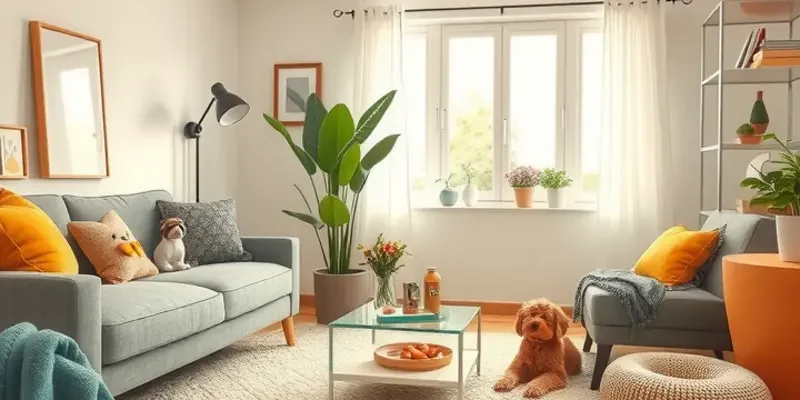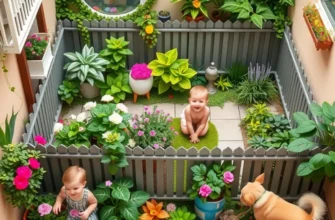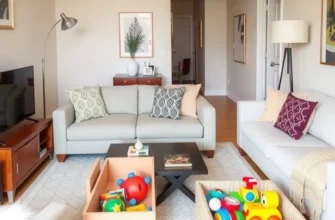Finding a suitable apartment that accommodates both pets and children can often feel like searching for a needle in a haystack. Families, couples, and pet owners alike want a safe and comfortable home where everyone feels welcome, including furry friends. With the right strategies, you can create an environment that meets the needs of both your pets and children, ensuring a harmonious living experience. This article will guide you through essential pet behavior solutions aimed at fostering a welcoming apartment while keeping the entire family — including the pets — happy and engaged. We’ll explore actionable tips that help alleviate common challenges faced by pet owners in apartments. From choosing the right furniture to establishing pet boundaries, you’re equipped with all you need to transform your apartment into a safe haven for every family member.
Creating a Pet-Friendly Apartment Environment

Start by transforming your apartment to cater to both your pets and children. The first step is to choose pet-friendly furniture. Select materials like leather or tightly woven fabrics, which are easier to clean and resist scratches. Lightweight, moveable furniture can create versatile spaces for play and rest.
Designate specific areas for your pets to lounge and play. Include a cozy pet bed and a few favorite toys. If space allows, create a small corner with a scratching post. This helps contain pet activities and reduces the likelihood of chaos spreading through the apartment.
Child safety should also be at the forefront. Use baby gates to restrict pet access when needed. This can prevent pets from entering unsafe areas or disturbing sleeping children.
Pets are naturally curious, so it’s crucial to pet-proof common household items. Install safety latches on cabinets, especially where cleaning products are stored. Ensure that cords and wires are out of reach, possibly by securing them along walls or hiding them behind furniture.
Incorporate pet-friendly flooring solutions to withstand the wear and tear from paws. Consider durable options like tiles or high-quality laminates. These are easier to maintain and provide an additional layer of protection for your floors. For more flooring ideas, you can explore pet-friendly flooring solutions.
Develop routines that integrate smoothly with family life. Schedule regular playtimes to keep your pet active. This can also serve as family bonding time. Implementing these routines ensures that your pets receive consistent attention and care, minimizing their stress and reducing behavioral issues.
Establish feeding stations that are easily accessible yet tucked away from high-traffic areas. This keeps the space organized and limits potential mess. Use non-slip mats under food and water bowls to prevent spills and facilitate easy cleaning.
For families living in small apartments, vertical space can be a lifesaver. Utilize wall shelves and perches where pets can safely explore or retreat. This gives your pets more room while not encroaching on the living area shared with your children.
Overall, an apartment that caters to both children and pets doesn’t have to sacrifice style for functionality. Thoughtful integration of pet-friendly materials, safety measures, and dedicated spaces creates a harmonious environment for all household members.
Training Tips for Happy Pets and Peaceful Living

Investing in proper training for your pets is crucial for harmonious apartment living. With limited space, a well-behaved pet ensures a peaceful home environment and strengthens the bond between pets and family members. Here are some training tips tailored for apartment settings.
Leash Training: Teaching your pet to walk calmly on a leash is beneficial for their safety and your peace of mind. Start by introducing the leash during playtime indoors, allowing your pet to get comfortable. Gradually move to short walks around your apartment, rewarding them for not tugging. Consistency is key; use treats or verbal praise to reinforce good behavior.
Obedience Commands: Ensure your pet knows basic commands like “sit,” “stay,” and “come.” These commands help manage pet behavior, especially in close quarters. For instance, “sit” and “stay” can prevent excited pets from running into guests or neighbors. Practice these commands daily, and use small, high-value treats as rewards to reinforce success.
Structured Schedules: Pets thrive on routine. Establish a daily schedule that incorporates feeding, walks, and playtime. Regular feeding and bathroom breaks help prevent accidents and reduce anxiety. This structured approach creates predictability, helping pets feel secure in a small living space.
Positive Reinforcement: Focus on rewarding good behavior instead of punishing the bad. If a pet exhibits undesirable behavior, redirect their attention and praise them when they respond correctly. This method builds trust and encourages pets to repeat positive actions.
Enriching Playtime: Keep your pets mentally and physically stimulated to prevent boredom, which can lead to destructive behavior. Interactive toys are fantastic for this, as they challenge your pets’ problem-solving skills. In addition, consider rotation of toys to keep things fresh and exciting.
Stimulating Activities: Engage your pets in activities that match their natural instincts. For instance, cats love climbing and scratching. Installing wall-mounted climbing shelves or a cat tree can provide outlets for these behaviors without taking up floor space. Dogs might enjoy puzzle toys that dispense treats, which will stimulate their minds and reward their persistence.
Engagement Strategies: Spend quality time with your pet through training sessions, games, and walks. Communication through training will reinforce your relationship and ensure your pet associates your presence with positive experiences.
Adapting these training tips will ensure a more harmonious coexistence in your apartment and foster a deeper connection with your pet. For additional tips on maintaining your apartment’s condition while housing pets, consider exploring pet-friendly flooring solutions.
Final words
Creating a pet-friendly environment within your apartment is entirely feasible and can greatly enhance the quality of life for both your children and pets. By making a few thoughtful adjustments to your living space and investing time in training, you’ll create a harmonious home that provides comfort and safety. Embrace the opportunity to bond with both your furry companions and family, ensuring that each interaction is met with love, patience, and understanding. Remember, each step taken contributes to a nurturing environment where every family member thrives.








